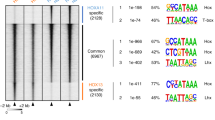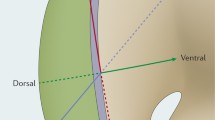Abstract
Homeobox genes located in the 5’ part of the HoxA and HoxD complexes are required for proliferation of skeletal progenitor cells of the vertebrate limb. Specific combinations of gene products determine the length of the upper arm (genes belonging to groups 9 and 10), the lower arm (groups 10, 11 and 12) and the digits (groups 11, 12 and 13). In these different domains, individual gene products quantitatively contribute to an overall protein dose, with predominant roles for groups 11 and 13. Quantitative reduction in the gene dose in each set results in truncations of the corresponding anatomical regions. The physical order of the genes in the HoxA and HoxD complexes, as well as a unidirectional sequence in gene activation, allow for completion of the process in a precise order, which in turn makes possible the sequential outgrowth of the respective primordia. While the skeletal patterns of upper and lower limb are relatively stable throughout the tetrapods, more variation is seen in the digits. Molecular analysis of the underlying regulatory processes promises further exciting insights into the genetic control of development, pathology and the course of evolution.
Similar content being viewed by others
Author information
Authors and Affiliations
Additional information
Received: 24 October 1998 / Accepted: 3 November 1998
Rights and permissions
About this article
Cite this article
Zákány, J., Duboule, D. Hox genes in digit development and evolution. Cell Tissue Res 296, 19–25 (1999). https://doi.org/10.1007/s004410051262
Issue Date:
DOI: https://doi.org/10.1007/s004410051262




